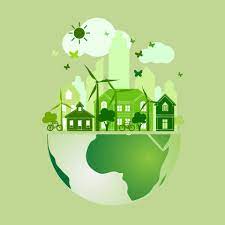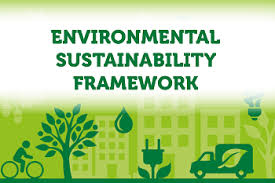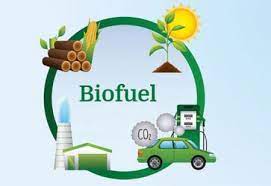Executive Summary
This proposal aims at addressing energy as an environmental sustainability issue in the Ignabi community. The proposal suggests that for individuals to understand the environmental impacts, they must account for the production means. Biofuels are an essential factor in achieving a neutral net carbon level; however, manufacturers should consider how to produce them. This is because some methods of production produce more greenhouse gas compared to other methods. The proposal suggests that the Ignabi community should be informed of the different carbon emission levels. Furthermore, they should be made aware of the cost benefits associated with the use of biodiesel.
Environmental Sustainability Problem
Every energy source has some effect on the environment with fossil fuels rated as the most harmful compared to renewable energy sources. The use of fossil fuels causes damage to public health, global warming emissions, and habitat and wildfire loss. Nevertheless, inexhaustible sources of energy such as hydropower, biomass, geothermal, solar, and wind further have environmental effects, and some of them are significant. The exact intensity and type of environmental effects differ based on a particular geographic location and the technology utilized (Mohsin et al., 2020). By comprehending the potential and current environmental problems related to every sustainable energy source, individuals can proceed to effectively minimize or avoid these effects as they become a part of a society’s energy supply.

Currently, most communities are attempting to adopt the use of renewable energy. See figure 1 above, showing how an environmentally stable community should look like. Research states that for the next two decades, governments and industries would require over 2 trillion dollars to sustain electricity production (Shah et al., 2019). Furthermore, research shows that sources of renewable energy produce about 90 to 99% less global warming emissions compared to coal (Mohsin et al., 2020).
Concentrating on inexhaustible sources of energy other than coal and fossil fuels might aid in evading environmental impacts, particularly from greenhouse gases and air pollution. However, every form of electricity generation has an impact on the environment. Thus, understanding different methods of generating renewable energy is the key to ensuring that the world achieves a low-carbon level in the future.
Environmental issues and energy are closely associated, since it is almost not possible to consume, transport, or produce energy without notable impacts on the environment. Some of the environmental issues directly associated with energy consumption and production include solid waste disposal, thermal pollution, water pollution, climate change, and air pollution (Shah et al., 2019). Fossil fuel combustion is the major contributor when it comes to greenhouse gas emissions. Multiple problems of water pollution are related to the usage of energy including oil spills. There are higher chances that those operations that deal with oil spill some either on the ground or on water bodies. Coal changes groundwater flow, which in turn brings in to contact unpolluted water with minerals that increase the acidity of water.
The Ignabi community lives in a region that boarder’s the sea. The society exists in a developing country; however, compared to other neighboring towns, it is the most developed city. People within this community mainly use private transport to move around the town. As a result, the city experiences congestion on the road due to traffic jams. Additionally, the city is has large amounts of oil and coal resources making it the main distributor of energy to neighboring towns and countries. Due to this, most people prefer to find jobs within this region and, as a result, it has the most population in the country. Furthermore, this is the main reason why there are many vehicles in the region. The main source of energy being used by the Ignabi community is oil and coal.
Policy Framework

The purpose of this policy framework is to guide the adoption of renewable energy, including consent, implementation, issuing, and review. The framework refers to the UN Sustainable Development Goals and national and local policy and aims to ensure the Ignabi community has consistent, up-to-date, and relevant practices of utilizing sustainable energy. Figure 2 above demonstrates some of the components that the framework entails.
The framework applies to every community member contributing to the process of adopting sustainable energy sources. Any additional framework exemption will be accounted for on an exceptional basis by the Ignabi community’s energy ministry Additionally, the framework includes a policy development guide and lifecycle. In this case, the lifecycle includes the assessment process, consultation, research, draft, pre-approval, approval, implementation, and the review stage. All these processes would be in form of a template and would be attached to the framework document.
The framework will include a policy management section that outlines the different bodies that would be involved in the policy development. The energy department’s role is to execute the policy framework by facilitating the processes essential in the lifecycle and the development of the policy. The Ignabi community will be the main concern of the policy management system. The energy ministry would be responsible for overseeing the policy implementation processes by ensuring that there would be integrity and accountability. The governing body would also be responsible for making minor changes to the policy framework.
However, it should be noted that there would be no changes made unless approved by the relevant authorities. In case there is need to make structural changes to the society, community and ministry leaders will be consulted. The framework would include a compliance management section that would outline numerous laws that should be followed in the implementation process. Finally, the framework would define the different responsibilities and roles of every participant in the project.
Biofuel Energy
For generations, biofuels have consistently been a reliable energy source. Even though the utilization of lignocellulosic raw materials as solid biomass is a generally known idea, biofuel conversion into liquid gasoline is a significant challenge. Additionally, the more complicated the biofuel gets, the more complex and usually costly the process of conversion becomes. In the last 20 years, the world has seen a decrease in its oil resources (Gaurav et al., 2017).
Consequently, this has influenced most regions of the world to consider biofuels as a substitute. The other developing problem is that in the last fifty years, the usage of fossil fuel-based petroleum has increased. For instance, in Canada, there is the usage of over 7.9 billion liters of petrol in the transportation industry every year (Boboescu et al., 2019). With the increasing concern towards greenhouse gas discharges, the utilization of biomass, even though sometimes censured, is frequently an environmental option. The reason is that biomass carbon balance is almost neutral compared to fossil-based fuels.
In the field of inexhaustible energy, there exist first-generation biofuel machineries, which can be utilized to manufacture biomethane that can slowly be improved to fuel used in vehicles (biodiesel). In comparison to ethanol, the manufacturing of biopetrol is different since it involves chemical processing (Nguyen et al., 2017). Similar to ethanol, biodiesel production utilizes seeds and oily plants (biomass) as raw materials. The cost of oil on the global market differs depending on the vegetable sources. For example, in 2013, the market of soybean oil was valued at about $ 1,200 per ton while that of palm oil was roughly 901 per ton (Aro, 2016).
On the other hand, approximately $ 1,150 per ton was the value of canola oil, which is another essential raw material for the production of biodiesel (Aro, 2016). From this, it can be noted that these feedstocks produce biodiesel at higher prices. Today, more interest is directed towards using non-edible feedstock such as jatropha and used oils. By incorporating such measures, it is expected that this would solve environmental problems related to the usage of fossil fuels.

First-generation biofuels were majorly produced from edible feedstock, and these were expensive. Figure 3 above shows some of the materials utilized to produce biofuels. To improve on technology, there was the introduction of second-generation biofuels, which mostly utilize non-edible materials. Trabelsi et al. (2018) define second-generation biofuels as those manufactured from a range of varying feedstocks, particularly but not limited to materials that are not edible.
These raw materials are divided into non-homogenous and homogenous resources of production. Non-homogenous materials include municipal solid waste and can cost between $ 0 to $ 60 per ton. On the other hand, homogenous materials are those that involve plant materials such as chips of white wood and can cost roughly between $ 100 to $ 120 per ton (Aro, 2016). Compared to the prices of such products as sugarcane, corn, and oil, these fuel products are much cheaper.
To produce second-generation biofuels, there is the requirement of modern technology. The reason for this is that processing such fuels is a complex process, which traditional technology cannot handle or can be too expensive (Aro, 2016). Additionally, the production of biofuels is connected to the product market; as a result, the conversion cost of the raw material to the final commodity must be lower to ensure that companies obtain profit.
Contrarily, several feedstocks allow the chance to manufacture a wide range of commodities from the same raw material. Second-generation biofuels are beneficial because they make fuel manufacturing more sustainable since plants utilized are non-edible and, therefore, this eliminates the competition in food production (Nguyen et al., 2017). Additionally, second-generation biofuel production aims at producing a commodity for which its use results in a negative or a neutral net carbon.
Currently, numerous products are being produced to sustain the fuel industry. Today, there has been an increment in the utilization of motor vehicles which release carbon that has a negative impact on the atmospher. The result of this is that there is increased global warming, thereby leading to climate change. Governments have resorted to the production of vehicles that utilize biodiesel. There is the production of three types of biodiesel depending on the size of the vehicle targeted.
For instance, B2 is a type of biodiesel that contains 2% biodiesel and 98% petrodiesel (Ruan et al., 2019). Due to its lower levels of biodiesel, it is mainly utilized by smaller vehicles and reduces the level of carbon emissions. The other example of an existing biofuel is the B5, which is made up of 5% biodiesel and 95% petrodiesel, which is primarily used by heavier vehicles (Bryngemark, 2019). These are essential since when compared to other petroleum products, they significantly decrease carbon emissions.
To avoid the negative implications that come with greenhouse gases emissions, the community needs to change its living conditions. One suggestion is that the people of the region should be made aware of the impact their vehicles have on the environment. From the living conditions of the community, it is clear that most people are not taking into account the carbon emission level each vehicle has. Currently, motor vehicle manufacturing companies have to adhere to policies of carbon emissions. There are those vehicles that have higher carbon discharge levels compared to other cars. People should be made aware so that they can make the right decisions that would further the agenda of the protection of the environment.
The community should consider adopting new technologies that would enable them to produce more biofuels. This is helpful because it would help improve the economy of the town since it would be able to trade in biofuels. Secondly, it would make biofuels more affordable to the community, thereby encouraging them to use environmentally friendly vehicles. Additionally, investing in modern technology ensures that the economy can produce high-quality biofuel. The significance of this is that people will be able to utilize these products without any concern about their vehicles breaking down. Furthermore, these suggestions will contribute to a negative or a neutral net carbon level.
Intended Benefits of the Proposal
The generally intended benefit of this proposal is to ensure that the Ignabi community uses a more sustainable method of utilizing energy. With society growing rapidly, there is an increased concern in how they utilize energy, particularly in the transport sector. Most individuals are unaware of carbon emissions impact on the environment. This proposal is an informative tool that informs the general public concerning the importance of switching to the use of biodiesel in the transport sector. The other advantage is that it provides information on how people can save money by using biodiesels as an alternative source of energy.
Reference List
Aro, E.M., 2016. From first-generation biofuels to advanced solar biofuels. Ambio, 45(1), pp.24-31.
Bryngemark, E., 2019. Second-generation biofuels and the competition for forest raw materials: A partial equilibrium analysis of Sweden. Forest Policy and Economics, 109, p.102022.
Boboescu, I.Z., Chemarin, F., Beigbeder, J.B., de Vasconcelos, B.R., Munirathinam, R., Ghislain, T. and Lavoie, J.M., 2019. Making next-generation biofuels and biocommodities a feasible reality. Current Opinion in Green and Sustainable Chemistry, 20, pp.25-32.
Fivga, A., Speranza, L.G., Branco, C.M., Ouadi, M. and Hornung, A., 2019. A review on the current state of the art for the production of advanced liquid biofuels. Aims Energy, 7(1), pp. 46-76.
Gaurav, N., Sivasankari, S., Kiran, G.S., Ninawe, A. and Selvin, J., 2017. Utilization of bioresources for sustainable biofuels: a review. Renewable and Sustainable Energy Reviews, 73, pp. 205-214.
Mohsin, M., Naseem, S., Zia‐ur‐Rehman, M., Baig, S. and Salamat, S., 2020. The crypto‐trade volume, GDP, energy use, and environmental degradation sustainability: An analysis of the top 20 crypto‐trader countries. International Journal of Finance & Economics.
Nguyen, Q., Bowyer, J., Howe, J., Bratkovich, S., Groot, H., Pepke, E., and Fernholz, K., 2017. Global production of second-generation biofuels: Trends and influences. Dovetail Partners Inc.
Ruan, R., Zhang, Y., Chen, P., Liu, S., Fan, L., Zhou, N., Ding, K., Peng, P., Addy, M., Cheng, Y., and Anderson, E., 2019. Biofuels: introduction. In Biofuels: Alternative feedstocks and conversion processes for the production of liquid and gaseous biofuels (pp. 3-43). Academic Press.
Shah, S., Zhou, P., Walasai, G. and Mohsin, M., 2019. Energy security and environmental sustainability index of South Asian countries: A composite index approach. Ecological Indicators, 106, p.105507.
Trabelsi, A.B.H., Zaafouri, K., Baghdadi, W., Naoui, S. and Ouerghi, A., 2018. Second-generation biofuels production from waste cooking oil via pyrolysis process. Renewable energy, 126, pp.888-896.